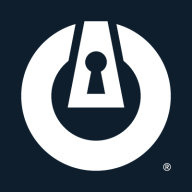

SentinelOne Singularity Complete and ThreatLocker Zero Trust Endpoint Protection compete in cybersecurity, focusing on endpoint protection and threat prevention. SentinelOne appears to have an edge in real-time threat prevention and autonomous threat mitigation, while ThreatLocker excels in application control and network security.
Features: SentinelOne Singularity Complete incorporates rollback functionality and machine learning-based threat detection, providing real-time prevention and analysis. Its AI-driven approach offers autonomous threat mitigation without cloud dependency. ThreatLocker Zero Trust emphasizes application control, selective elevation, and comprehensive allowlisting. These features provide robust application and network security by restricting unauthorized actions and establishing a secure baseline for trusted actions.
Room for Improvement: SentinelOne might enhance its offering with better reporting, more extensive software integration, and user-friendly management console features. ThreatLocker could benefit from improved UI/UX and user-friendly tools for managing ringfencing and allowlisting. Both platforms are encouraged to focus on cost efficiency and better integration with third-party solutions.
Ease of Deployment and Customer Service: SentinelOne supports both cloud and on-premises deployments but may be resource-intensive, posing challenges for smaller organizations. It offers good customer support, though quicker response times are desired by some users. ThreatLocker is favored for hybrid deployments due to easy installation processes, and its responsive support team receives praise, though occasionally consistency in support quality is cited for improvement.
Pricing and ROI: SentinelOne's pricing is often higher, justified by its comprehensive features preventing costly incidents. Users find its pricing competitive against rivals like CrowdStrike. Conversely, ThreatLocker provides cost-effective solutions with significant value through strict application control, offering a high ROI by reducing labor costs and streamlining security operations. Both are viewed as valuable investments against complex threat environments.
Since then, I have not faced any intrusions, which is one reason I chose SentinelOne over ESET.
We have not faced any attacks since we implemented it.
It has absolutely helped reduce our organizational risk.
If something were to happen without ThreatLocker, the cost would be huge, and thus, having it is definitely worth it.
The main return on investment is peace of mind, knowing that with ThreatLocker on any endpoint, it will almost always block all malicious code or exploits, even zero-day exploits.
It keeps malware, Trojans, and ransomware at bay.
They do a great job of figuring out the problem and pointing you to generic documentation or working with you to fine-tune a solution.
We are using the automated email process for support, and they respond within an hour or two hours sometimes.
A chat service would be beneficial.
They have been very responsive, helpful, and knowledgeable.
I would rate their customer support a ten out of ten.
Their support is world-class.
It's all auto-scale and auto-categorized, configuring automatically.
The tool's built-in automation for deploying the agents works well for large infrastructures like mine.
My deployment is relatively small, and SentinelOne Singularity Complete works within those constraints.
I started off with just the servers, and within a month and a half, I set up the entire company with ThreatLocker.
It seems to primarily operate on the endpoints rather than at a central location pushing out policies.
I would rate it a ten out of ten for scalability.
It has caused problems with interoperability between third-party tools, which could lead to entire servers crashing or specific tools failing.
This indicates room for improvement in stability when interacting with other solutions.
Initially, there were issues, particularly on the management side, but now the console is much more stable.
For five years, we have not had a problem.
Once deployed, it downloads the policies locally, so even if the computer doesn't have internet, it doesn't matter.
It has been very stable, reliable, and accessible.
The only thing that prevented the attack from succeeding was a free version of Malwarebytes.
Providing a single pane of visibility for the end user would be beneficial.
It's challenging to prevent a user from manipulating their privileges or someone else's of others, and it's difficult to control what users can access at the organizational level.
Controlling the cloud environment, not just endpoints, is crucial.
This is problematic when immediate attention is needed.
Comprehensive 24-hour log monitoring is a valuable enhancement for both business and enterprise-level users.
If you want protection, you have to pay the price.
There are other products that are less expensive, but I tell my clients that in security, they cannot cut corners or look for the cheapest solution.
Reputation and quality are important, but especially in today’s economy, price is a significant factor.
After conversations with other partners, it became clear we underpriced it initially, which caused most of our issues.
We are moving towards the Unified solution, where they basically bundle everything together, providing us better stability with the ability to bring in new product offerings without having to go back to the customer and say, 'This is going to cost you.'
I had a really good deal at the time, and it continues to be cost-effective.
I have an advanced app providing visibility of all my endpoints, which was not the case before.
SentinelOne has a feature to decommission automatically, which has been fantastic.
There's also automation that gives my team free time, preventing them from having to look for every alert.
ThreatLocker Zero Trust Endpoint Protection Platform's ability to block access to unauthorized applications has been excellent.
It protects our customers.
The major benefit is fewer breaches overall, as nothing can be run without prior approval. This helps my company protect its data and secure itself effectively.
| Product | Market Share (%) |
|---|---|
| SentinelOne Singularity Complete | 4.7% |
| ThreatLocker Zero Trust Endpoint Protection Platform | 0.9% |
| Other | 94.4% |


| Company Size | Count |
|---|---|
| Small Business | 82 |
| Midsize Enterprise | 45 |
| Large Enterprise | 75 |
| Company Size | Count |
|---|---|
| Small Business | 32 |
| Midsize Enterprise | 4 |
| Large Enterprise | 3 |
SentinelOne Singularity Complete provides AI-driven threat detection and response with features like ransomware protection and rollback, offering endpoint protection with minimal system impact and deep forensic analysis.
SentinelOne Singularity Complete combines machine learning and artificial intelligence to offer robust endpoint protection. It delivers real-time insights and advanced threat detection through seamless integration with third-party tools, allowing for efficient endpoint management. With an emphasis on user-friendliness, it ensures reduced false positives. Room for improvement includes better integration options, enhanced reporting, and more precise analytics to tackle false positives. Users seek improved interoperability with systems and comprehensive support for legacy systems.
What are the key features of SentinelOne Singularity Complete?Organizations from industries like finance, healthcare, and technology deploy SentinelOne Singularity Complete to safeguard endpoints such as PCs, servers, and virtual machines. Equipped with EDR, it effectively replaces traditional antivirus systems and integrates with cloud technology for real-time security insights.
ThreatLocker Zero Trust Endpoint Protection Platform offers robust endpoint security through application control and allowlisting, safeguarding servers and workstations from unauthorized software execution.
ThreatLocker Zero Trust Endpoint Protection Platform provides extensive application control with features like ring-fencing and selective elevation, ensuring meticulous execution management. Offering learning mode and extensive support, it integrates threat detection and activity monitoring to enhance compliance, reduce costs, and bolster cybersecurity through alerts and approvals. Despite its strengths, there are areas for improvement in training flexibility, policy updates, and interface enhancements, along with challenges in handling non-digitally signed software. Deployed across environments, it works well with existing cybersecurity instruments for real-time threat prevention.
What are the top features of ThreatLocker?ThreatLocker Zero Trust Endpoint Protection Platform is widely implemented to safeguard IT infrastructures against unauthorized access and application use. In sectors where data security is paramount, this platform enables users to prevent unauthorized software installations and control device applications, ensuring real-time threat prevention and compliance with industry regulations.
We monitor all Endpoint Protection Platform (EPP) reviews to prevent fraudulent reviews and keep review quality high. We do not post reviews by company employees or direct competitors. We validate each review for authenticity via cross-reference with LinkedIn, and personal follow-up with the reviewer when necessary.